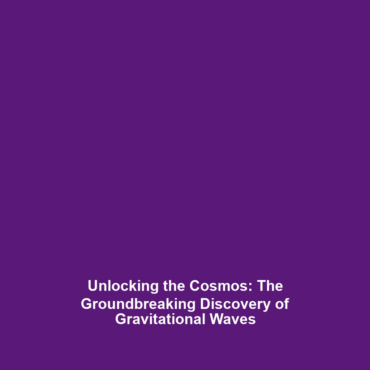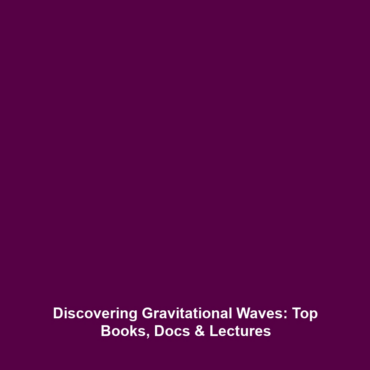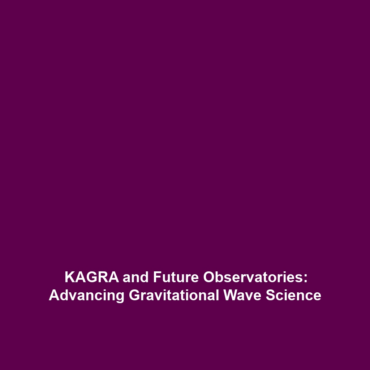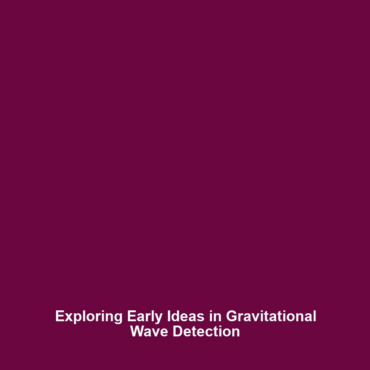The Discovery of Gravitational Waves
The discovery of gravitational waves marks a watershed moment in modern astrophysics, opening a new window to the universe. It validates key predictions of Einstein’s General Theory of Relativity and enhances our understanding of cosmic events such as black hole mergers. Gravitational waves have not only confirmed scientific theories but have also initiated novel avenues for exploration in astronomy. This article delves into the significance of discovering gravitational waves and its implications for the field.
Key Concepts
Understanding the discovery of gravitational waves requires familiarity with several crucial concepts:
1. What are Gravitational Waves?
Gravitational waves are ripples in spacetime caused by the acceleration of massive objects, such as binary black holes or neutron stars. When these celestial bodies collide or merge, they release energy in the form of gravitational waves.
2. Einstein’s General Theory of Relativity
In 1916, Albert Einstein predicted that massive objects accelerate, causing ripples in spacetime. This theory laid the groundwork for the eventual detection of gravitational waves.
3. Detection of Gravitational Waves
The first direct detection of gravitational waves occurred on September 14, 2015, by the Advanced Laser Interferometer Gravitational-Wave Observatory (LIGO). This monumental event confirmed the existence of these waves and initiated a new era in astrophysics.
Applications and Real-World Uses
The discovery of gravitational waves has profoundly impacted various scientific fields. Here are key applications:
- Astronomical Observations: Gravitational waves enable the observation of cosmic events beyond the capabilities of traditional telescopes.
- New Astronomy: They provide a complementary tool for astrophysics, enhancing gravitational wave astronomy and enriching the study of particle physics.
- Testing General Relativity: The detection of gravitational waves allows physicists to test the limits of Einstein’s theory in extreme conditions.
Current Challenges
Despite significant advancements, several challenges remain in studying gravitational waves:
- Sensitivity Limitations: Current detectors have sensitivity limits that restrict their ability to detect weaker signals from distant events.
- Noise Interference: Environmental noise can interfere with signal detection, posing a challenge for accurate readings.
- Technological Constraints: Continued improvements in technology are necessary to enhance detection capabilities and analyze data efficiently.
Future Research and Innovations
As the field of gravitational wave astronomy evolves, researchers are exploring several innovative avenues:
- Next-Generation Detectors: Future detectors like the Einstein Telescope or the Cosmic Explorer aim to significantly enhance sensitivity and detection range.
- Multi-Messenger Astronomy: Combining gravitational wave data with electromagnetic observations could offer deeper insights into cosmic phenomena.
- Testing Theories of Gravity: Continued research may help answer fundamental questions about gravity and the fabric of spacetime.
Conclusion
The discovery of gravitational waves has reshaped our understanding of the universe, providing unprecedented insights into cosmic phenomena. As research continues and technology advances, the future promises exciting discoveries that will further elucidate the mysteries of gravitational waves. For more on related topics, explore our articles on Relativistic Physics and Cosmic Observations.



